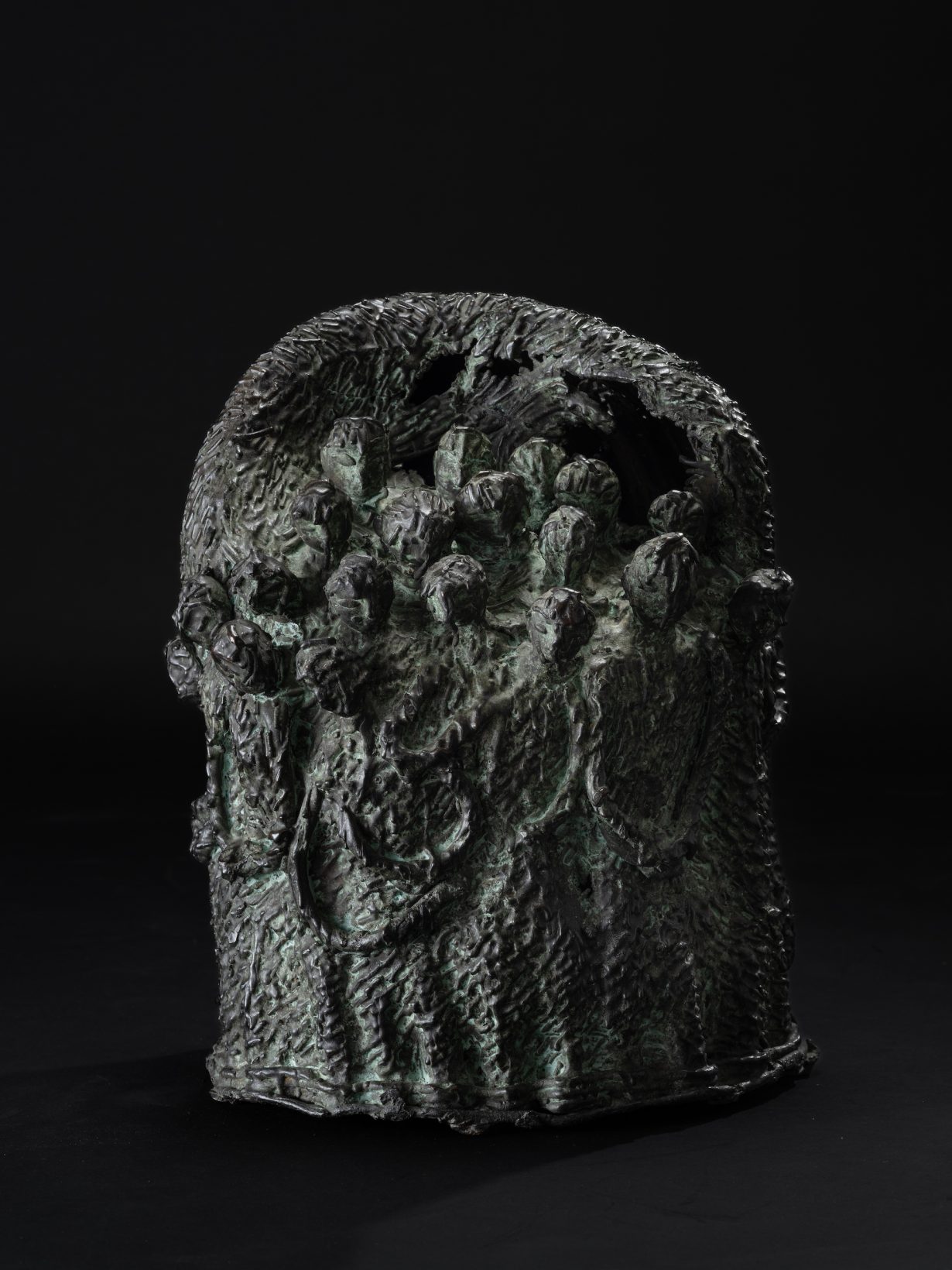Outside In at MAP, Bengaluru pairs Meera Mukherjee and Jaidev Baghel in an attempt to bridge the gap – in culture, class and caste

The difference between the perception of an ‘artist’ and of an ‘artisan’ or ‘craftsperson’ perhaps relates to the language used to describe them: while the artist is celebrated through language, the worker is anonymised. Just a worker, typically from a marginalised community, sitting in a dank workshop and unimaginatively producing things the exact way that their ancestors did. This discriminating definition relating to who makes art and who produces objects favours the former, who has a better chance of standing atop a pedestal and receiving praise, money and national or international fame. The artisan, unable to articulate their indigenous idiom in a way that appeals to the fine art market, all too often remains in the village, enjoying fame and financial success rarely, if at all.
These problems of language, which really are synonymous with problems of caste, class and religion in India, preoccupied the practice of sculptor Meera Mukherjee, who brought innovation to ancient Bengali sculpting techniques beginning in the 1950s. This show, more particularly, highlights Mukherjee’s lifelong attempts to bridge the gap between the artist and the artisan, placing her bronze sculptures in conversation with the works of Jaidev Baghel, a traditional master of bronze casting who was born into the community of Gadhwa artisans in Kondagaon, Chhattisgarh. While Mukherjee trained in the arts at college, Baghel had access to traditional knowledge, and learned the techniques of metal casting when he was eight years old from his father, Sriman Baghel, a famed artisan himself.
Supported by government programmes that, in the early post-Independence decades, actively sought to rejuvenate artforms that had suffered from a shortage of much-needed royal patronage, Mukherjee was tasked by the government with researching indigenous sculptural practices in rural India. This would give her a hyphenated identity in later years as an anthropologist, artist and researcher. Mukherjee and Baghel’s work intersected when, as part of her research, she arrived at Kondagaon during the 1960s and was apprenticed with the latter’s father. This, in turn, was thanks to her own growing interest in bronze sculptures in the Dhokra style of central and east India, especially the lost-wax casting process, one of the oldest known methods of metal casting, which the senior Baghel had perfected.
Outside In offers a partial but important view of how this creative exchange allowed artist and artisan to push the boundaries of the material, as well as the themes that they explored. Though Mukherjee and Baghel derived their thematic concerns from wholly different contexts, their experiments made them both outsiders: outsiders who were looking in.
Several works, like Mukherjee’s Rath Yatra, Coal Miners and Queuing Before the Passport Office (all circa 1980) are displayed alone and showcase the themes of labour and mass movement, and the everyday activities that she was interested in depicting in her sculptures. Rain (c. 1980) is the most evocative work in the show, depicting a group of people stuck in the rain trying to seek shelter by clustering together. The rains in India are never not an event; this awareness adds to the way raindrops slide down the faces of the people in the sculpture, their bodies fusing together, trying to stay warm and dry. That Mukherjee was able to cast the imagery of formless water in metal so intricately, no detail on the faces or bodies of people lost, speaks of both skill and experimentation with material and method.

Baghel’s standalone works, Seated Madin and Seated Madiya (both 2007), Madiya with His Child (2006), the series of sculptures featuring madins at work (2006) and Prithvi (2006) show people engaged in everyday activities of labour or at leisure. Depicting a woman (madin) and a man (madiya) of the Madia Gond tribe together is now a common theme in Dhokra art, but it was a sharp departure from tradition when Baghel began pushing the scope of his community’s art practice –grounded by jewellery, vessels and votive sculptures – to include largescale figures engaged in the quotidian.
The exhibition includes a textile work by Mukherjee and some kantha embroidery pieces that she created with women from marginalised communities who worked at her foundry near Kolkata, which give a sense of her wider practice. But where the show works best is when the sculptures of each artist are placed alongside each other in a comparative study, limited though such instances are. For instance, in Mother and Child (c.1990), Mukherjee somewhat abstracts her portrayal of a mother cradling her infant: the forms are minimal, the movement protective, as if keeping the world away. In Baghel’s Madin with Her Child (2007), the posture is pragmatic, suggestive of the everyday, the mother adorned in traditional jewellery. These comparisons especially make it evident that the artist and the artisan were often one and the same when it came to the work they were making, able to skip across barriers constructed due to a faulty usage of language.
Outside In at Museum of Art and Photography (MAP), Bengaluru, through 20 October